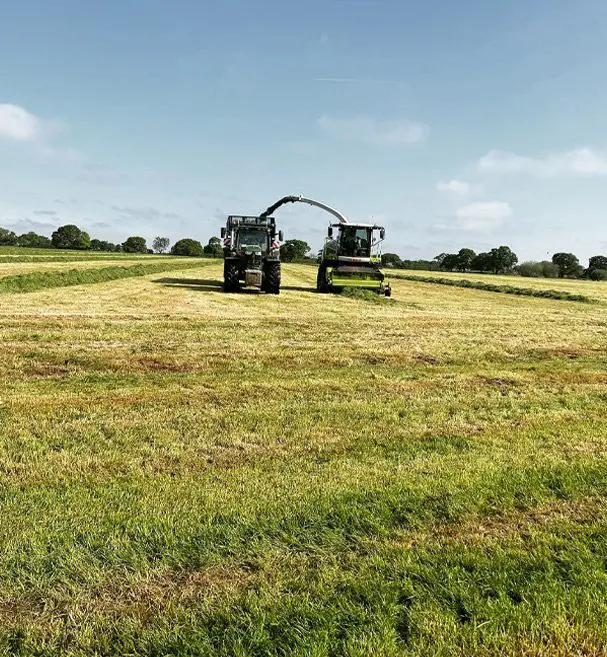‘Rural property’ includes whole farms, bare farmland, farm buildings, equestrian facilities, or diversified commercial buildings used for workshops, offices or storage.
In most cases a “one size fits all” agreement simply does not fit.
When it comes to forming contract agreements, Selby Rural considers the wider implications of planning, tax, and business rates, as well as changes to legislation which older agreements may not include.
BROWSE RURAL PROPERTY TO LET
SELECTING THE RIGHT FARM TENANCY
Agricultural tenancies are governed by two very different Legislative Acts, both of which have evolved significantly over time. There are many factors at play when choosing between a tenancy, a licence, or a contract farming agreement. Selby Rural applies a thorough understanding of the complex legislation, along with an understanding of client objectives and needs, to establish the right agreement.

PLANNING FOR TENANCY SUCCESSION
Land and holdings under a tenancy are often passed down the generations; either by the right to succeed a tenancy or via entering new agreements. The family farm is not only an asset from which to derive an income, but also a home, so tends to be very emotionally involved. In some cases, succession can come with generational resistance and even dispute. Selby Rural helps to mediate and organise long term succession plans to ensure future sustainability.

FORMALISING UNWRITTEN TENANCIES
Verbal tenancy agreements are all well and good until something goes wrong and there is nothing to refer to except Statute Law. It is quite common to hear “father shook hands on it years ago”, and the agreement has been like that ever since. This could give rise to an agricultural tenant claiming a lifetime tenancy or assigning it to a Limited Company. Selby Rural first makes clients aware of the implications of such an arrangement, such as tenant rights and inheritance tax, before understanding the position on the ground and devising a strategy to enter into agreements or serving of notices. This is imperative to get right as it can have a huge impact on the right to review the rent, terminating agreements, or end of tenancy compensation.

Testimonials
“The process of compiling lease agreements for my business, was made very easy with Selby Rural’s help and support. We have other leases agreements that need to be introduced into the business and I will differently be using your services again.”
Peter Stewart
Minshull Vernon, Cheshire
“Tom guided us through what could have been a difficult tenancy agreement, making all the necessary arrangements to reach a positive outcome. Throughout our dealings with Selby Rural, Tom is someone I can trust and who would be working with us going forward.”
P Evison
Penley, Wrexham
“I have used Selby Rural in several roles, valuations, land mowing sales and building tenancy establishments, and I have been very pleased with the work. I am delighted to recommend Selby Rural.”
Philip Percival
Nantwich

Frequently Asked Questions
An Agricultural Holdings Act 1986 tenancy (AHA) applies to land and buildings let for horticulture, livestock, and commercial grazing purposes prior to 31 August 1995 in England and Wales. This type of tenancy provides tenants with a high level of security of tenure, and the ability to pass on the tenancy to eligible successors. AHA tenancies are generally long- term tenancies lasting for several decades. Under an AHA tenancy, the landlord is responsible for maintaining the structure of the farmhouse and their buildings. The tenant is responsible for the day-to-day farming of the land. In some circumstances, the repairing obligations are split on a 50:50 basis.
A Farm Business Tenancy (FBT) is the most modern type of agricultural tenancy governed by the Agricultural Tenancy Act 1995. This type of tenancy can be anywhere from one month up to several decades, but in most circumstances, it is a short-term tenancy providing the landlord with greater flexibility with the terms of the tenancy.
For example, the rent is based on the open market rent, unlike an AHA which is based on the productive and related earning capacity. This can be up to 50% less than the open market rent.
Don’t panic! A verbal agreement can still be legally binding. In most cases both parties are agreeable to formalise the position to protect themselves. However, if you have an old tenancy which was prior to 1995, this could be a bit trickier, and we would certainly recommend taking professional advice on this.
The first instance is to check the terms of the tenancy. Under an FBT, the parties can agree how they wish for the rent to be calculated and how often within the tenancy agreement.
With both AHA’s and FBT’s. a landlord will commonly protect their position by serving a rent review notice 12 months prior to the term date. The rent review notice does not necessarily trigger a rent review, it ensures that both parties have the right to refer the matter to arbitration if a rent cannot be agreed. A rent review can only be referred to arbitration every three years, however the parties can agree matters between themselves.
Our Reviews
View Google Reviews


